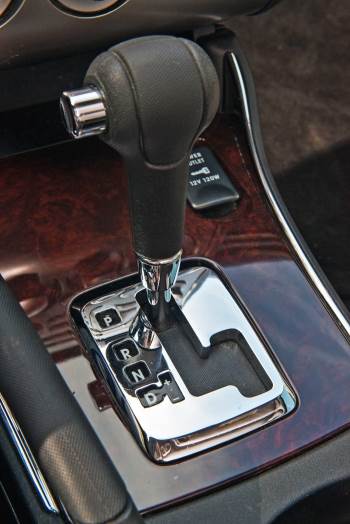If you drive a car with an automatic transmission, you may have considered about what would occur if the transmission began to fall short.
Below are five symptoms of transmission problems you should not overlook:
1. Dashboard warning lights
A warning light alone, like the “check engine” light, typically doesn’t mean you have a transmission problem, but if any of the above symptoms are occurring in conjunction with an illuminated warning, have it diagnosed by a professional. A warning light typically means the computer is generating an error code that can be checked with a shop’s diagnostic equipment. For transmissions specifically, “P0700” is a code that can indicate a general transmission problem.
2. Delayed engagement
If this symptom occurs, you’ll notice a delay before the car actually engages into drive and starts moving forward. When you shift out of “P” and into “D,” there may be a long pause where the car revs the engine as you give it gas, but it’s not moving forward as it should.
3. Slippage
If you’re experiencing automatic transmission slipping, it can feel like you’re driving in a certain gear and then it changes for no apparent reason. The noise from the engine may change in pitch or start to sound like whining.
Related: How much does it cost to repair my transmission?
Your car may also seem like it’s struggling, is suddenly underpowered, or isn’t accelerating like it should.
4. Rough shifts
Your car may feel like it’s refusing to change gears as it normally does, or the gear shifts aren’t very smooth. Sometimes you can feel or hear a noticeable “clunk” or “thud” when the car shifts gears. You may also notice the car has difficultly getting up to speed.
4. Leaks
Transmissions are generally sealed units that should never leak fluid. If you’ve noticed leak spots on your driveway or garage floor, lay down cardboard under your car in the front and middle to determine if they’re active leaks.
If your transmission is leaking – fluid is bright red, but can also be a dark red or brown – visit your auto service shop. Before refilling any transmission fluid; factory specifications should be followed because overfilling can create a bigger transmission issue.
Transmission repair considerations
Costs related to repairing your transmission can be as little as $150 or so to replace a defective transmission solenoid and up to $2,500 or more to repair or replace an entire transmission. You should definitely research what shops in your area specialize in transmission repair and call or visit them to get an estimate. If your normal mechanic doesn’t specialize in or provide transmission repair, they should be able to recommend a specialist.
If you’re not comfortable driving your vehicle due to transmission issues, have it towed in. Most reputable shops will want to test drive the vehicle to attempt to replicate the issues you’re concerned with, but that may mean they need additional time to diagnose the problem. Any towing and diagnostic fees should be included in your estimate.
Questions to ask of transmission repair shops
Before authorizing any transmission repair, ask if they plan on replacing parts and where those new parts will come from. If they’re rebuilding the existing transmission or replacing it with a new one, ask what the warranty is. An industry standard warranty is 12 months or 12,000 miles (whichever comes first), but you may be able to purchase an extended 24-month/24,000-mile warranty or even a 3-year/36,000-mile warranty.
You can also inquire if your transmission expert is a member of or accredited by the Automatic Transmission Rebuilders Association. No matter what, make sure you ask any questions about the repair procedure before it happens, and that the shop leaves you with a good experience about trusting them with what could be an expensive repair.

5 Important Transmission Problems One Should Pay Attention to
by
Tags:

Leave a Reply